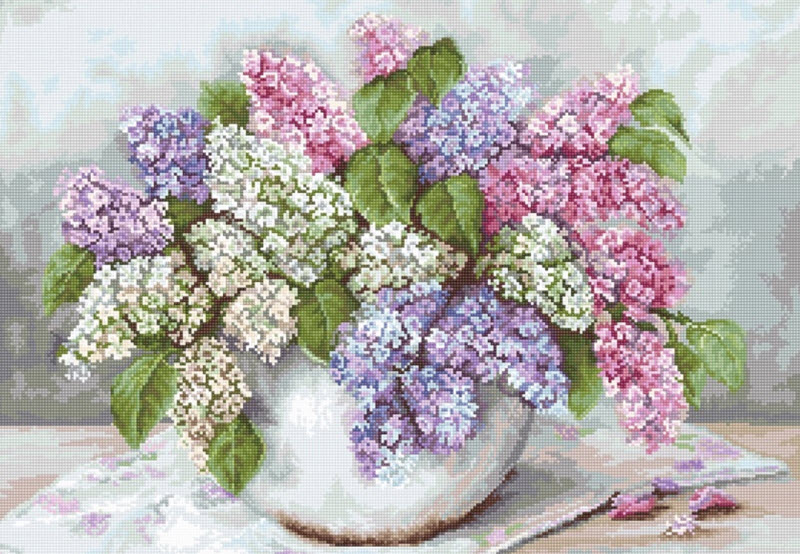
Needlepoint is a type of counted thread embroidery, where a yarn is stitched through openings in a stiff canvas. The canvas used for needlepoint have openings at regular intervals, and the level of detail that is possible when doing needlepoint will depend on the thread count of the canvas.
Traditionally, needlepoint designs normally covered the whole canvas. In the 20th and 21st century, many needlepoint artists have broken away from this form and experimented with alternative forms of needlepoint designs.
Needlepoint is a very old form of embroidery, even if the word itself doesn’t appear in English texts until the Victorian era (sometimes as a synonym for point-lace rather than a term utilized for what we today know as needlepoint embroidery).
Needlepoint embroidery has been found in ancient Egyptian graves, including the tomb of a Pharaoh that lived circa 1500 BCE.
The United States needlepoint tradition has its roots in European needlepoint, such as the Bargello and the Berlin wool work. Examples of famous Europeans known to have engaged in needlepoint embroidery are Queen Elizabeth I, Mary, Queen of Scots, and Marie Antoinette, Queen of France and Navarre.
As needlepoint spread to North America, it became popular there as well; both as a hobby and as domestic work that could be sold to provide the embroider with an income. One example of a U.S. citizen known to have loved needlepoint is Martha Washington, the wife of U.S. president George Washington.
Needlepoint stitches
Since needlepoint is stitched on an open-grid canvas, you are in a sense producing a new fabric rather than just embellishing an existing one. Because of this, the stitches selected for needlepoint are often quite sturdy.
Examples of commonly used stitches for needlepoint are tent stitches (including half-cross tent stitches), Victorian cross stitch, and random long stitch. It is quite common to use only one type of stitch for a project, and rely solely on color changes to create the image.
Examples of other stitches used for needlepoint, albeit less commonly than the three mentioned above:
- Upright cross stitch
- Whipped flower stitch
- Brick Stitch
- Gobelin stitch, including Encroaching Upright Gobelin stitch
- Mosaic stitch
- Arraiolos stitch
- Old Florentine stitch
- Parisian stitch
- Smyrna stitch
- Hungarian ground stitch
- Hungarian point stitch
When “The Needlepoint Book” by Jo Ippolito Christensen was published in 1976, it helped popularize a variety of obscure stitches, as it contained a total of 436 stitches suitable for needlepoint.

Threads for needlepoint
Many different types of threads can be used for needlepoint. Nowadays, synthetic threads are available as an affordable alternative to natural fibers, although many needlepoint artists prefer to stick with traditional threads, such as wool threads and cotton threads, and – when the budget allows – silk threads. There are also wool-silk blend threads available.
Metallic fiber threads can be utilized to add glimmer to a needlepoint creation. Needlepoint art consisting of metal fibers only is very rare; metallic threads are usually only added as highlights to produce a contrasting effect.
